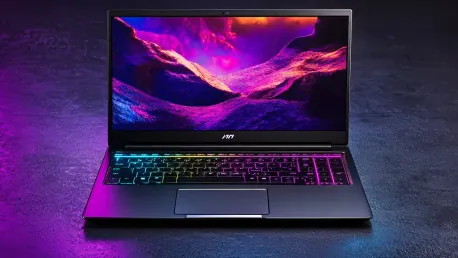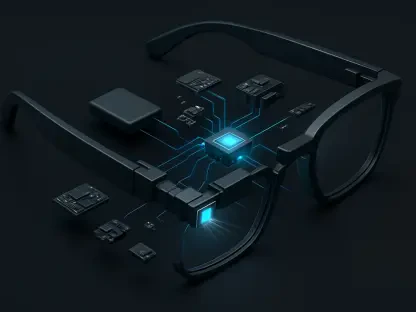As we edge closer to 2025, the anticipation surrounding Intel’s upcoming Arrow Lake H hardware platform continues to grow, particularly regarding the sophisticated Core Ultra 200H processors. This platform exemplifies Intel’s strides in enhancing processing core efficiency and incorporates cutting-edge technologies such as the formidable Arc integrated graphics processing unit (iGPU), DDR5 or LPDDR5x memory, PCIe Gen5 solid-state drives (SSDs), WiFi7, and Thunderbolt 5.0.
One of the standout features of Arrow Lake H is its ability to support a diverse array of laptop designs. This versatility ranges from ultra-thin, lightweight laptops to models equipped with dedicated GPUs. We take an in-depth look into how these processors can be leveraged in high-end devices featuring Nvidia RTX Blackwell graphics, to more budget-friendly models with various RTX graphics options. But first, let’s delve into the design and hardware specifics of the Arrow Lake H processors.
Design and Hardware of Intel Arrow Lake H
Hybrid Core Design
Arrow Lake H showcases a hybrid core design utilizing Lion Cove Performance (P) Cores and Skymont Efficiency (E) Cores, with both core types fabricated on TSMC’s 6 nm N6 node. This innovative design strategy mirrors elements found in the Arrow Lake HX and Lunar Lake V platforms but differs in terms of core quantity and overarching CPU architecture.
One notable differentiation from the Lunar Lake series is that all cores in Arrow Lake H share a singular bus-ring and cache memory, enhancing their operational synergy. This unified configuration allows the Skymont Cores to fully maximize their potential, displaying significant advancements in Instructions Per Cycle (IPC) compared to the previous-generation Crestmont cores used in the 1st gen Core Ultra H, also known as Meteor Lake hardware. Consequently, even though P-Cores in Core Ultra 200H processors do not feature HyperThreading, they generally surpass their predecessor 100H processors in both single-threaded and multi-threaded tasks under similar power levels and cooling conditions.
The operational efficiencies gained from the advanced core designs are set to offer a substantial leap in laptop performance, ensuring that devices powered by Arrow Lake H processors will stand out in terms of processing power and efficiency. This translates to an enhanced user experience for activities ranging from everyday computing tasks to more intensive applications such as gaming and content creation.
Memory and Cache Configuration
Arrow Lake H diverges from the Lunar Lake V’s closed SoC design with embedded memory by supporting LPDDR5x onboard memory for portable designs or DDR5 memory through standard DIMM slots for larger, more budget-conscious formats. This memory configuration flexibility can significantly impact performance depending on the workload, especially when the memory is not in close proximity to the CPU die.
A notable feature is the support for CAMM2 (Compression Attached Memory Module), designed to facilitate RAM upgrades in compact forms—a boon for users seeking to extend their device’s lifespan and capabilities over time. However, as of now, it remains uncertain whether OEMs will widely adopt this technology, as no implementations have been observed thus far.
This adaptable approach to memory support provides users with options that cater to a wide range of needs and price points. It allows for the creation of devices that can effectively balance cost with performance, offering significant benefits whether the priority is maximizing speed and efficiency or ensuring affordability and ease of upgrade in constrained formats.
Graphics and Performance
Integrated Graphics Capabilities
When it comes to graphics, Arrow Lake H integrates Intel’s Arc 140T, which is an enhanced version of the Arc 140V found in the Lunar Lake platform. Both iterations include 8 second-generation Xe cores; however, the 140T is expected to deliver around 10% better performance compared to the 140V when adequately powered.
In contrast, the Lunar Lake V hardware operates efficiently with a total power draw of 25-30W, but to achieve optimal performance from an Arrow Lake H setup, a more sustained power level is typically necessary. For instance, the Core Ultra 9 285H CPU boasts a design Thermal Design Power (TDP) adjustable from 45 to 115W, while the Core Ultra 7 and 5 SKUs are more suitable for mid-powered devices with a TDP range of 28-60W. This ultimately means that while most ultraportables will continue to rely on Lunar Lake V hardware, Arrow Lake H will find its place in high-performance, portable designs.
The escalated performance of the 140T highlights Intel’s commitment to enhancing integrated graphics capabilities within their laptop processors. These advancements signify a move towards more capable and versatile integrated graphics solutions, which can efficiently handle a variety of tasks, from high-definition video playback to moderate gaming and professional graphical applications.
Performance Metrics and Comparisons
A comparative analysis between Arrow Lake H and Meteor Lake platforms reveals key design distinctions attributable to generational shifts in core technology. These distinctions are evident in several areas, such as cache configuration, maximum Turbo frequencies, and overall performance benchmarks. Although the design TDP ranges and lithographic processes are relatively similar between the two platforms, the performance and efficiency improvements brought by Arrow Lake H’s updated cores confirm its dominance over older systems operating within comparable wattage and cooling constraints.
Notably, the core architecture refinements in Arrow Lake H, combined with superior memory and integrated graphics capabilities, position it as a superior option for next-generation laptops. The enhancements in these areas promise users faster and more efficient operations, better multitasking capabilities, and an overall smoother user experience.
Laptops Built on Intel Arrow Lake H (Core Ultra 200H) Platform
Entry-tier Laptops
Acer aims to make entry-tier laptops more appealing with its Aspire Vero 16, which features a predominantly plastic build and weighs in around 1.8 kg. This model sports a 16″ IPS screen with non-touch capabilities and can be configured with up to a Core Ultra 9 255H processor and Arc 140T graphics. Additionally, it offers a maximum RAM capacity of 32 GB LPDDR5x and supports up to two M.2 SSD slots alongside a modest 48 Wh battery.
The practical design and upgraded specifications of the Aspire Vero 16 make it a solid choice for users seeking an affordable yet capable laptop for everyday tasks. Its robust construction and sufficient processing and graphics power ensure that users can enjoy a reliable and efficient computing experience without stretching their budget.
Mid-tier Portables
Stepping up a notch, Acer’s Swift Go 14 and 16 models flaunt all-metal builds and weigh between 1.3 to 1.5 kg. These laptops feature OLED or IPS screens with touch or non-touch options and are equipped with Core Ultra 7/9 processors and Arc 140T graphics. They can accommodate a maximum of 32 GB LPDDR5x RAM and offer up to two M.2 SSD slots. Enhanced cooling is provided through dual-fan, single-heatsink, and dual-heatpipe configurations, with battery capacities spanning from 54 to 65 Wh.
For users desiring a slightly larger display and more power, the Asus Vivobook S 16 presents itself as an appealing option. It features a metal construction, weighs around 1.5 kg, and comes with a 16″ OLED screen. This model is powered by the Core Ultra 7 255H and Arc 140T, supports up to 32 GB LPDDR5x RAM, a single M.2 SSD slot, and packs a 75 Wh battery, ensuring a solid blend of performance and portability.
The mid-tier portable laptops exemplify the Arrow Lake H platform’s capacity to deliver high performance in a compact, portable format. These devices cater to professionals and power users who need more substantial computational power without compromising on mobility or battery life.
All-around Models
Asus positions its Vivobook Pro 15 as a versatile all-rounder with a mixed-metal build approximate 1.8 kg. This model boasts a 15.6″ OLED screen with a 2.8K resolution and 120Hz refresh rate, powered by the Core Ultra 9 285H alongside up to RTX 4060 graphics. RAM can reach up to 40 GB DDR5, and it includes dual M.2 SSD slots and a 75 Wh battery, perfect for those who need robust performance for a variety of tasks.
The MSI Modern 15 offers a mostly plastic build with a weight of around 1.9 kg. It is equipped with a 16″ non-touch IPS screen and supports up to Core Ultra 9 285H and Arc 140T. Users can install up to 32 GB LPDDR5x RAM and a single M.2 SSD slot, supported by a battery option ranging from 39 to 54 Wh.
MSI also provides a mid-tier, 2-in-1 laptop, the MSI Summit 13 AI Evo. Featuring an aluminum build, this laptop weighs in at around 1.35 kg and sports a 13.3″ 2K 60Hz touch screen. It is powered by the Core Ultra 7 255H and Arc 140T, supports up to 32 GB LPDDR5x RAM, offers a single M.2 SSD slot, and comes equipped with a 70 Wh battery.
These all-around models showcase the versatility and comprehensive capabilities of the Arrow Lake H platform. They blend robust computing power with refined graphics performance, providing users with a well-rounded laptop experience suitable for a wide range of uses, from professional work to casual gaming.
Premium Models
At the premium end of the spectrum, the Asus Zephyrus G16 stands out with its all-metal construction, RGB keyboard, and a six-speaker setup, weighing around 1.95 kg. It features a 16″ OLED screen with a 2.5K resolution and 240Hz refresh rate, capable of being configured with the Core Ultra 9 285H and RTX 5090, supporting up to 145W for CPU+GPU. The model accommodates 64 GB LPDDR5x RAM, comes with dual M.2 SSD slots, and has a top-tier vapor chamber cooling system with a 90 Wh battery.
Dell’s Pro Series also stands tall in the premium laptop category, featuring all-metal builds available in 14″ and 16″ sizes. These laptops can be spec’d with high-end Core Ultra 9 processors and a spectrum of Nvidia RTX graphics, from the RTX 500 Pro to the RTX 2000 Ada.
The Asus ROG Zephyrus G16 warrants special mention due to its remarkable performance capabilities across various applications, including work, content creation, and high-end gaming. With specs that can be tailored up to an Ultra 9 processor alongside RTX 5090 and enhanced cooling mechanisms, it is well-positioned as one of the top choices for discerning users seeking unrivaled performance in the premium ultrabook category.
Conclusion and Key Findings
Acer is enhancing its lineup of budget-friendly laptops with the introduction of the Aspire Vero 16. This laptop primarily uses plastic for its construction, making it quite lightweight at around 1.8 kg. It features a 16-inch IPS display that, while non-touch, delivers clear visuals. It’s available with configurations that include up to an Intel Core Ultra 9 255H processor and Arc 140T graphics. Users can optimize performance further with a maximum of 32 GB LPDDR5x RAM and have the option for two M.2 SSD storage slots. The device is powered by a 48 Wh battery, which provides decent battery life for daily use.
The Aspire Vero 16 is not just about affordability but also efficiency and capability, aiming to deliver a balanced computing experience for everyday tasks. Its solid build and upgraded hardware ensure reliable performance, making it an attractive option for those looking for quality without a hefty price tag. Users will appreciate the laptop’s ability to handle various applications smoothly, providing both versatility and convenience.
In summary, the Aspire Vero 16 strikes a fine balance between cost and performance. With its sturdy design, enhanced processing power, and ample storage options, it offers users a dependable laptop for regular use. Whether you’re a student, a professional, or just someone in need of a reliable computer for daily activities, the Aspire Vero 16 shows that it’s possible to get great value without compromising on essential features.









